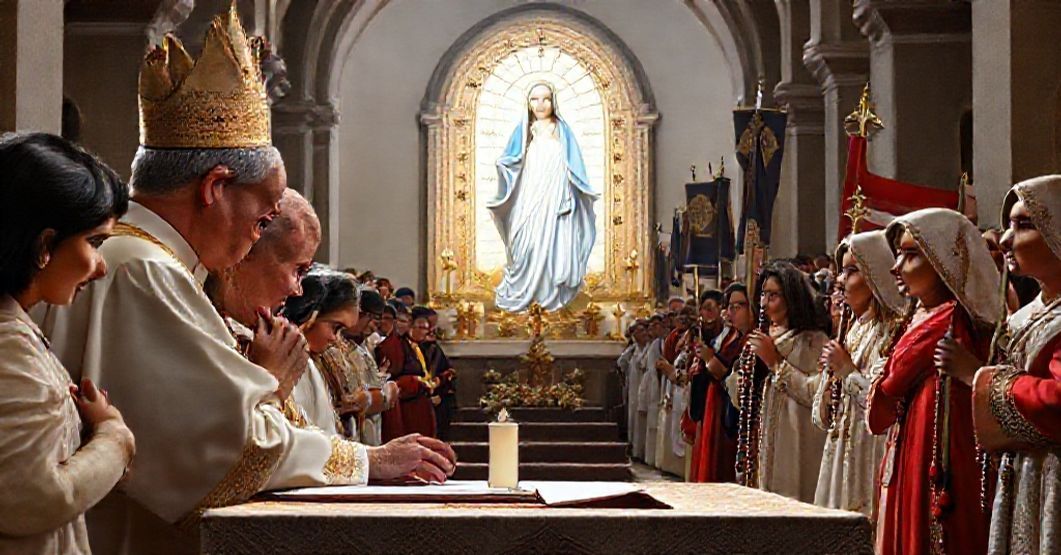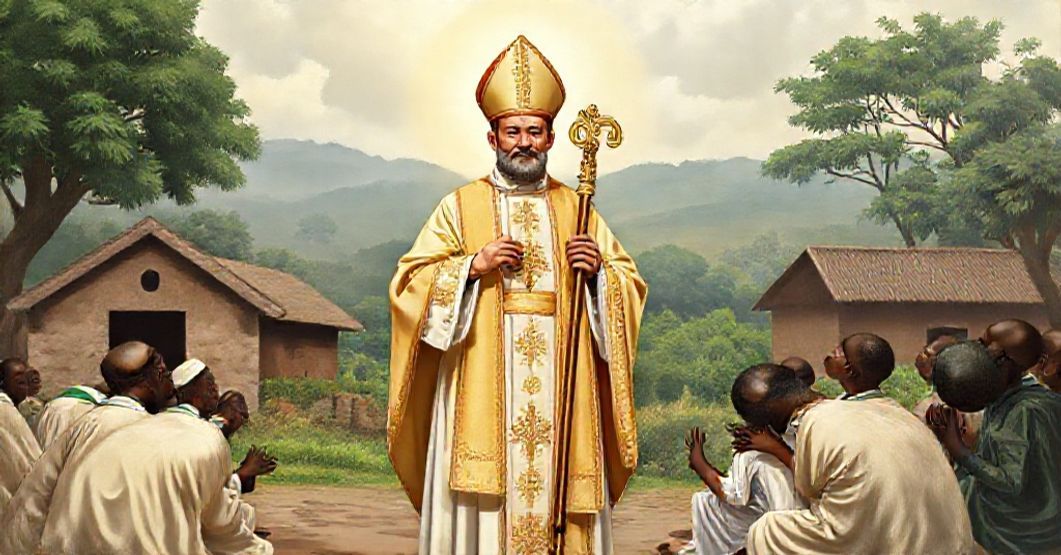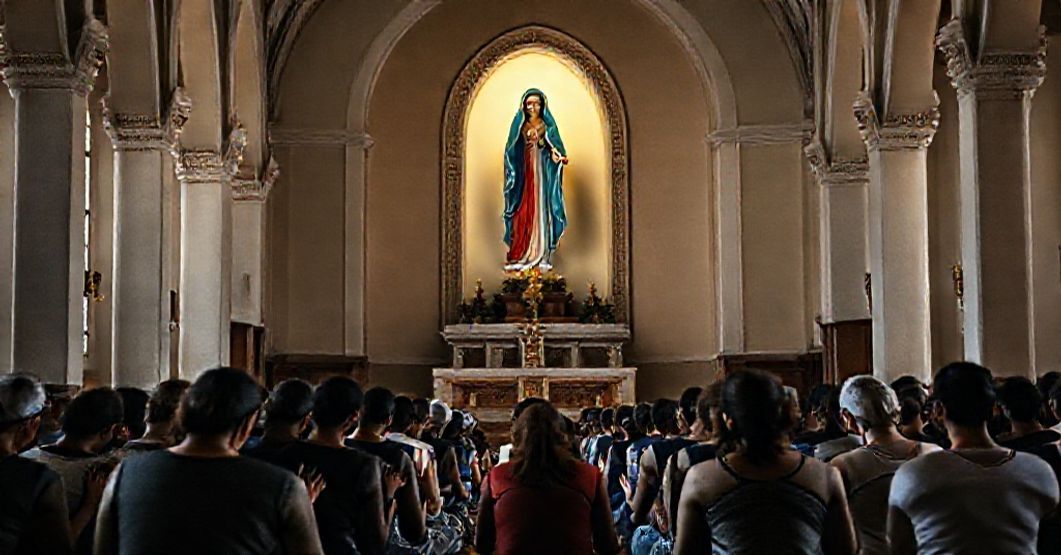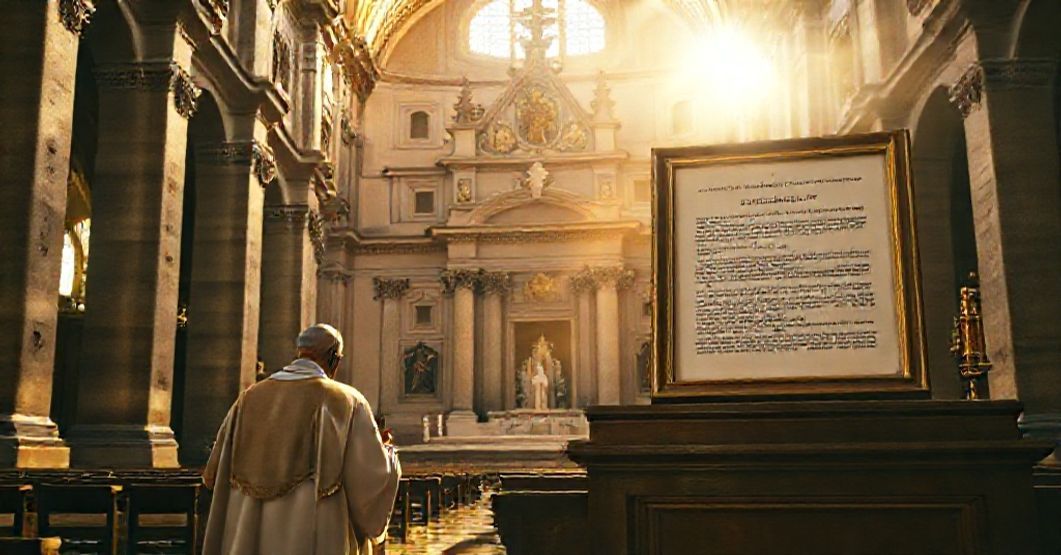Antipopes of the Antichurch



















Timeline of this heretical pontiff
Encyclical Letters
+ 15 posts1959
+ 7 posts1961
+ 4 posts1962
+ 2 posts1963
+ 2 postsApostolic Exhortations
+ 3 postsApostolic Constitutions
+ 93 posts1958
+ 6 posts1959
+ 87 postsMotu Proprio
+ 15 posts1958
+ 1 posts1959
+ 1 posts1962
+ 11 postsApostolic Letters
+ 151 posts1958
+ 4 posts1959
+ 63 posts1960
+ 78 posts1961
+ 1 posts1962
+ 4 posts1963
+ 1 postsSpeeches
+ 99 posts1958
+ 2 posts1959
+ 26 posts1960
+ 29 posts1961
+ 16 posts1962
+ 24 postsMessages
+ 6 posts1959
+ 4 postsHomilies
+ 4 postsLetters
+ 152 posts1958
+ 1 posts1959
+ 48 posts1960
+ 32 posts1961
+ 31 posts1962
+ 30 posts1963
+ 10 postsNot categorized
+ 1 posts1958
+ 1 postsNews feed


Singulari studio (1960.07.01)
The text under consideration is a brief Latin decree in which John XXIII, invoking apostolic authority, proclaims the Blessed Virgin Mary under the title “of the Most Holy Rosary of Río Blanco” as principal heavenly patroness of the conciliar diocese of Jujuy, confirming to this cult all the usual liturgical rights of diocesan patrons and nullifying any contrary dispositions.


Quemadmodum (1960.07.01)
The document “Quemadmodum” (1 July 1960), issued by the usurper John XXIII as an apostolic letter, declares Saint Patrick, bishop and confessor, heavenly patron of the Diocese of Ibadan (Nigeria), founded in 1958. In elevated yet formulaic Latin, it appeals to the venerable custom of entrusting dioceses to celestial patrons for protection, edification, and growth in Christian virtue, and then proceeds, with the supposed plenitude of “apostolic” power, to constitute Saint Patrick as patron, granting the usual liturgical rights and privileges.
Behind this apparently pious act stands the same revolutionary authority that convoked the conciliar upheaval, and thus even such a short text functions as another brick in the construction of the neo-church: the name of an authentic saint is instrumentalized to legitimize a counterfeit hierarchy and an emerging new religion.


Praecipuo pietatis (1960.07.01)
This brief Latin document, issued by John XXIII in 1960, declares that the image and title of the Blessed Virgin Mary under the name “Nossa Senhora da Ponte” venerated in Sorocaba (Brazil) is to be the “principal heavenly Patroness” of the Sorocaba diocese and episcopal city, granting her all liturgical honors proper to a primary local Patron. It justifies this act by appealing to Marian devotion among clergy and people and by the recommendation of the local hierarchy and papal diplomat, and it ends with the usual absolutist formula seeking to guarantee perpetual validity of the decree. In reality, this seemingly pious text is a juridical-stylistic façade masking the deeper usurpation of Marian titles, ecclesiastical authority, and cult by a conciliar intruder, instrumentalizing Our Lady in service of the emerging neo-church.


Merito praedicatur (1960.07.01)
The Latin text ascribed to John XXIII confers upon the cathedral church of Cesena the title and privileges of a “minor basilica,” rehearsing its historical and artistic merits, the baptisms of Pius VI and Pius VII in its font, and invoking routine juridical formulae to declare the elevation valid and perpetual. The entire document is a seemingly benign act of ecclesiastical patronage—but precisely in its apparent harmlessness, formalism, and historical flattery, it manifests the juridical imposture and spiritual void of the conciliar revolution already unfolding under the sign of John XXIII.
Varia
Announcement:
– News feed –implemented
– Antipopes separate web sites with their all documents refutation – in progress
